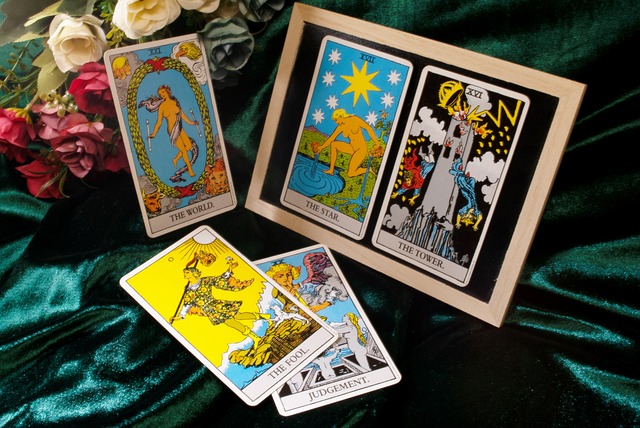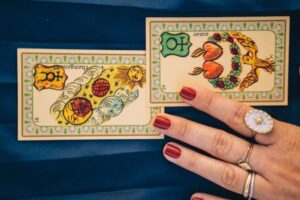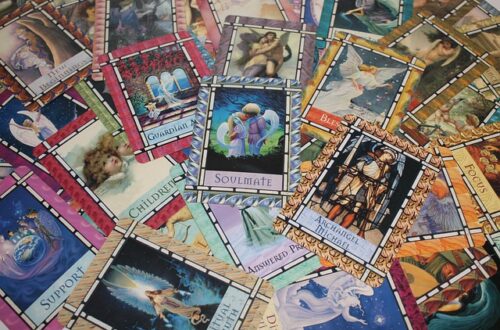
The role of Reversed Tarot Cards in Readings
Table of Contents
- The Role of Reversed Tarot Cards in Readings
The Role of Reversed Tarot Cards in Readings
Introduction
The **Tarot** has captivated individuals for centuries, offering insights into the human experience. Within the Tarot deck, each card holds significant meaning, which can change based on its orientation. While many tarot practitioners focus on upright cards, the reversed cards play a crucial role in enhancing the depth and breadth of readings. Understanding the significance of reversed cards can illuminate hidden aspects of a situation, provide clarity, and reveal underlying issues that may not be apparent when only considering upright cards.
Read: https://magical-rituals.com/blog/2024/12/06/how-to-cast-a-love-spell-on-a-man/
Understanding Reversed Tarot Cards
The Basics of Reversal
In Tarot, a reversed card appears upside down. This orientation traditionally indicates a **shift** in meaning from its upright position. Many readers interpret reversed cards as symbols of blockage, delay, or inversion of the card’s positive attributes. However, this interpretation can be nuanced and varies among practitioners. Therefore, it is essential to develop a personalized approach to understanding reversals.

Historical Context of Reversed Tarot Cards
The practice of interpreting reversed cards can be traced back to early Tarot history. Initially, tarot decks were used for playing games, and their esoteric meanings developed over time. Early texts, such as the *Book of Thoth* by Aleister Crowley, discussed the significance of reversed cards. **In modern Tarot practice**, readers have embraced reversals as a tool for deeper insights. This evolution reflects the growing understanding of the complex human psyche and the need for nuanced interpretations.
Symbolism and Interpretation
General Meanings of Reversed Cards
When interpreting reversed Tarot cards, certain themes consistently emerge. For instance, a reversed **Fool** may indicate recklessness, suggesting that the querent is not considering potential consequences. In contrast, a reversed **Death** card might symbolize resistance to change. Thus, the reversed position often highlights areas in need of attention or personal growth.
Common Themes in Reversed Cards
Each suit in the Tarot has its distinct themes that further influence the meaning of reversed cards. For example:
- Wands: Often associated with creativity and action, reversed Wands can signal delays or lack of direction.
- Cups: Tied to emotions and relationships, reversed Cups frequently indicate emotional blocks or issues in interpersonal connections.
- Swords: Symbolizing intellect and conflict, reversed Swords may represent confusion or mental turmoil.
- Coins: Connected to material aspects, reversed Coins often denote financial struggles or insecurity.
Contextual Influences on Interpretation
The meaning of a reversed card can vary significantly based on its context within the reading. The surrounding cards and the question posed by the querent are vital for a well-rounded interpretation. Moreover, the reader’s intuition plays a critical role in understanding how to apply these meanings effectively. **For example**, if a reversed **Tower** card appears alongside an upright **Sun**, the interpretation may lean towards a transition from chaos to clarity.

Techniques for Reading Reversed Cards
Developing a Personal Approach
As with any aspect of Tarot reading, developing a personal approach is crucial. Readers should consider how they resonate with the meanings of reversed cards. Some readers choose to ignore reversed cards entirely, while others incorporate them as a significant part of their readings. **To enhance your practice**, take time to reflect on your experiences with reversed cards and how they resonate with your readings.
Practical Exercises for Interpretation
Engaging in practical exercises can improve one’s understanding of reversed cards. One method involves drawing a single card daily and interpreting its meaning in both upright and reversed positions. Another exercise includes journaling about personal experiences that relate to the themes of the reversed cards encountered in readings. **By doing so**, readers can deepen their intuition and understanding of how reversals manifest in life.
Case Studies: Reversed Cards in Readings
Example 1: The Reversed Lovers Card
In a reading focused on relationships, a reversed **Lovers** card might suggest a lack of harmony or a decision that the querent is struggling with. It can indicate confusion about a relationship or the need for personal reflection. The querent may benefit from examining their feelings and understanding their desires, leading to a more informed decision about their relationship. **Here**, the reversed card opens a dialogue about communication and self-awareness.
Example 2: The Reversed Wheel of Fortune
When the **Wheel of Fortune** appears reversed, it may suggest stagnation or a feeling of being trapped in a cycle. The querent might feel that they are unable to change their circumstances, leading to frustration and despair. In this case, the reversed card encourages the querent to reassess their situation and consider what actions they can take to influence their destiny positively. **Through this exploration**, the querent may find the power to break free from negative patterns.

Addressing Misconceptions about Reversed Cards
Overemphasis on Negativity
One common misconception about reversed Tarot cards is that they exclusively represent negative outcomes. While many reversed cards indicate challenges, they also serve as opportunities for growth. **For instance**, a reversed **Magician** may signal a misuse of power or creativity but also invites reflection on how to harness one’s potential more effectively. Recognizing the duality within reversed cards can lead to more balanced readings.
The Importance of Intuition
Another misconception is that reversed cards have a fixed meaning. However, the **true art** of Tarot reading lies in the reader’s intuition. Each reader may interpret reversals differently based on their personal experiences and understanding. Trusting one’s instincts can significantly enhance the reading experience, offering deeper insights and personalized guidance. **Thus**, it is essential to foster intuition alongside traditional interpretations.
The Impact of Reversed Cards on the Querent
Encouraging Self-Reflection
Reversed cards often prompt querents to engage in **self-reflection**. When faced with challenges or issues revealed through a reversed card, querents are encouraged to explore their inner thoughts and emotions. This process can lead to valuable insights and personal growth. **For example**, a reversed **High Priestess** may suggest a need to reconnect with one’s intuition and inner voice, urging the querent to trust their instincts and wisdom.
Fostering Personal Empowerment
Reversed cards can also foster a sense of personal empowerment. By acknowledging challenges and addressing underlying issues, querents can take actionable steps towards transformation. A reversed card often represents the opportunity for change, signaling that the querent holds the power to alter their circumstances. **In this light**, reversed cards become catalysts for empowerment, encouraging querents to take control of their destinies.
Conclusion
The role of reversed Tarot cards in readings is multifaceted and profound. While they can signify challenges and obstacles, they also offer opportunities for growth, self-reflection, and empowerment. By embracing the complexities of reversed cards, readers can provide more insightful and meaningful readings. **Ultimately**, the interpretation of reversed cards enhances the Tarot experience, allowing querents to explore their paths with greater depth and understanding.
Bibliography
- Hajo Banzhaf, *Tarot and Psychology: Spectrums of Possibility* (2005). ISBN: 978-1572812516.
- Rachel Pollack, *78 Degrees of Wisdom: A Tarot Journey to Self-Awareness* (1980). ISBN: 978-0914918613.
- Mary K. Greer, *The Complete Guide to Tarot and Card Meanings* (2005). ISBN: 978-0738702457.
- Arthur Edward Waite, *The Pictorial Key to the Tarot* (1910). ISBN: 978-0875421058.
- Alison Cross, *The Tarot Reader’s Workbook* (2016). ISBN: 978-0994700917.




